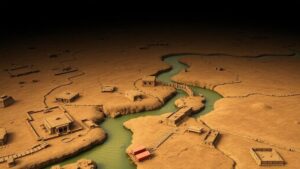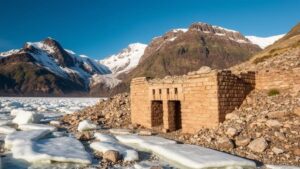Secrets of ancient civilizations revealed by volcanic eruptions and natural disasters.
Secrets of Ancient Civilizations Revealed by Volcanic Eruptions and Natural Disasters
Throughout history, volcanic eruptions and natural disasters have shaped not just the landscape but also the course of human civilization. These cataclysmic events have, at times, preserved crucial artifacts and provided insights into ancient societies. This article explores how such events have revealed secrets about ancient civilizations, examining notable instances where eruptions and natural disasters have significantly impacted human history.
The Catastrophic Eruption of Mount Vesuvius
One of the most infamous volcanic eruptions in history occurred in AD 79 when Mount Vesuvius erupted, burying the Roman cities of Pompeii and Herculaneum under a thick blanket of ash and pumice. eruption preserved these cities in remarkable detail, allowing archaeologists to uncover a wealth of information about daily life in the Roman Empire.
The preservation of buildings, frescoes, and even the contents of homes has given historians unprecedented insights. For example, the wall paintings in Pompeii depict various aspects of Roman culture, including mythology and everyday activities. The discovery of graffiti has also offered personal glimpses into the lives of the inhabitants, showcasing everything from political opinions to personal relationships.
The Destruction of the Minoan Civilization
The eruption of Santorini (Thera) around 1600 BCE played a crucial role in the decline of the Minoan civilization on the island of Crete. powerful explosion generated tsunamis and widespread ash fallout, impacting agricultural production and trade. Archaeological excavations at sites like Akrotiri have revealed remarkably preserved buildings, frescoes, and pottery.
The vibrant frescoes depicting marine life and daily activities have led researchers to link the Minoans decline to environmental changes stemming from the eruption. This aligns with data showing that the ash fallout would have disrupted farming cycles, contributing to social instability.
Earthquakes and the Fall of the Indus Valley Civilization
Natural disasters, particularly earthquakes, have also played significant roles in the fate of ancient civilizations. decline of the Indus Valley Civilization, which thrived between 2600 and 1900 BCE, is thought to be linked to seismic activity. Geological studies suggest a significant earthquake occurred around 2000 BCE, potentially leading to the abandonment of major cities like Mohenjo-Daro and Harappa.
Archaeological evidence indicates that many Indus cities were built with advanced techniques, including well-planned drainage systems. But, the sudden disruption of these systems due to natural disasters likely led to flooding and decreased livability, prompting migrations and societal collapse.
Revelations from the Ash: The Role of Mount St. Helens
More recent events, like the 1980 eruption of Mount St. Helens in Washington State, have also provided valuable lessons about ancient human interactions with nature. The eruption caused extensive ecological changes in the region, leading researchers to study how past civilizations may have adapted to similar events. St. Helens ash layers have revealed organic remains and materials that date back thousands of years, offering a timeline that corresponds with early Native American settlements.
This connection between geological events and human adaptation reinforces the understanding that ancient peoples often had to contend with the rapidly changing environments caused by natural disasters. The preservation of organic materials in the ash has contributed to the knowledge of ancient foods, tools, and settlement patterns.
Implications for Modern Society
Modern society can learn valuable lessons from the secrets uncovered through volcanic eruptions and natural disasters of ancient civilizations. As we face the realities of climate change, urbanization, and potential natural disasters, understanding how past societies responded to such challenges can guide contemporary disaster preparedness and urban planning.
- Invest in disaster preparedness to mitigate the impact of future natural catastrophes.
- Use archaeological findings to inform sustainable practices and resilience planning.
- Promote the study of historical data to understand potential risks associated with natural disasters.
Conclusion
Volcanic eruptions and natural disasters have played a pivotal role in shaping civilizations throughout history. The insights gained from archaeological discoveries not only enrich our understanding of human history but also inform our strategies for coping with future challenges. By continuing to explore the secrets revealed by these events, we can harness the knowledge of the past to build a more resilient future.


